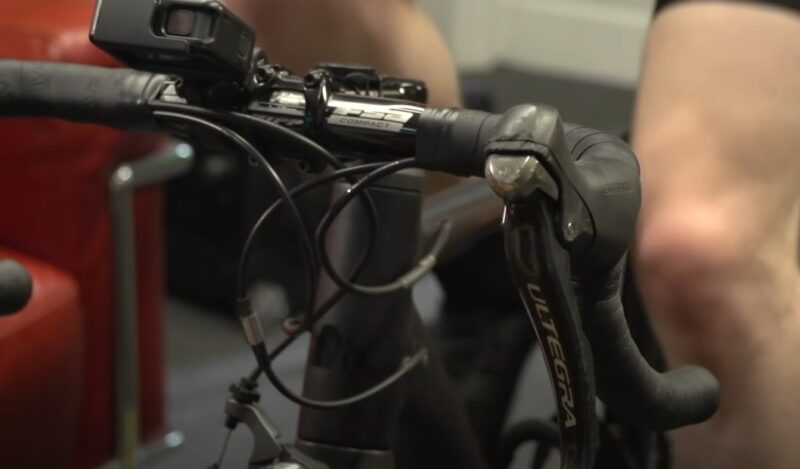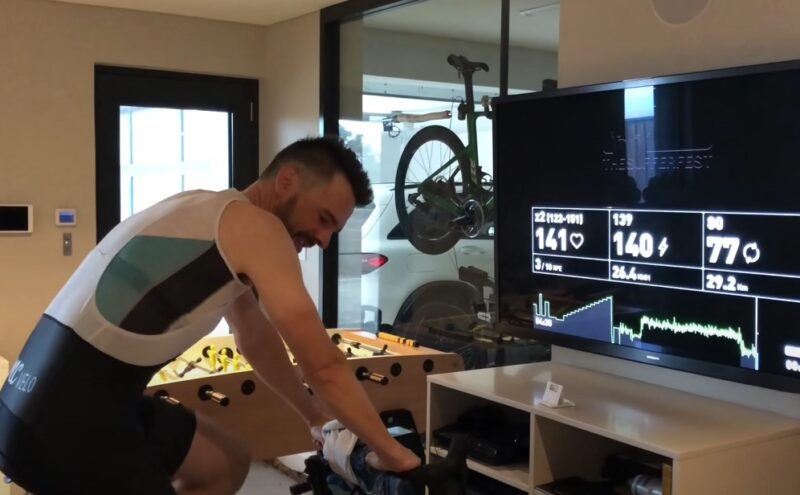Cycling has its fair share of jargon, but one term that pops up regularly in training discussions is Functional Threshold Power, or FTP.
It’s a big deal, and once you know what it means and how to use it, you’ll see improvements in your riding.
So, let’s explore the essentials every cyclist should know about FTP, without making things overly technical.
Table of Contents
ToggleFunctional Threshold Power In a Nutshell
Let’s break it down. Functional Threshold Power (FTP) is essentially the highest amount of power you can maintain for an hour without hitting that dreaded wall of fatigue.
It’s measured in watts and gives you a pretty solid picture of how much power your muscles can sustain before they give up due to lactate buildup. FTP acts as a benchmark for your endurance and aerobic capacity.
It tells you how well you can keep up on those long climbs, steady rides, or during intense time trials. Simply put, Functional Threshold Power is the number that shows just how long you can hang on before your muscles start screaming for mercy.
If you want to improve your cycling performance, knowing your FTP is a key place to start.
Why Does It Matter for Cyclists?
FTP is a core metric for a reason: it tells you how fit you are in real-world riding conditions. Unlike VO2 max (which is more about your oxygen capacity), FTP shows how efficiently your body converts that oxygen into power over long periods.
For those planning to crush hill climbs, perform in time trials, or improve endurance, FTP is the number to watch. If you’re serious about improving as a cyclist, working on increasing your FTP is going to pay dividends.
2. How Can You Calculate FTP?
There are a few ways to get your FTP, and yes, some are less torturous than others. One of the most popular methods involves a 20-minute all-out effort.
The average power you can produce during those 20 minutes is multiplied by 0.95, giving you a good estimate of your FTP. But if you’re feeling brave (or slightly masochistic), you can go for a 60-minute all-out test, which gives a direct reading of your FTP.
Other approaches, like 8-minute tests or ramp tests, can also estimate FTP, but they follow different protocols. The key here is consistency: whatever test you choose, stick with it so you can track your progress over time.
I’ll be honest, none of these tests are a breeze, but they give you valuable data to shape your training plan.
3. How to Train Using Functional Threshold Power

Once you know your FTP, your training gets a whole lot more structured. FTP allows you to break your workouts into specific power zones that target different aspects of your cycling fitness.
Here’s a quick breakdown:
| Zone | % of FTP | Description |
| Zone 1 | Up to 55% | Active recovery. Think easy, spinny rides. |
| Zone 2 | 56-75% | Endurance training. These are your longer, steady-state efforts. |
| Zone 3 | 76-90% | Tempo rides. These feel uncomfortable but manageable over time. |
| Zone 4 | 91-105% | Threshold efforts. You’re flirting with your FTP here, pushing those limits. |
| Zone 5 | 106-120% | VO2 Max efforts. These are short, sharp efforts that get your heart pumping. |
| Zone 6 | 121-150% | Anaerobic capacity. Short, intense bursts where you’re tapping into raw power. |
| Zone 7 | Above 150% | Sprint efforts. All-out, no-holds-barred sprints. |
By targeting specific zones in your training, you can improve different physiological systems. For example, working just below FTP in the “Sweet Spot” (88-94% of Functional Threshold Power) boosts your endurance without crushing your body.
4. How to Boost It?

Raising your FTP is every cyclist’s goal. Luckily, there are a few go-to strategies that are proven to work:
- Sweet Spot Training: This involves riding at 88-94% of your FTP, which allows for solid aerobic improvements without wrecking your legs. It’s a great way to increase endurance and power.
- Threshold Intervals: Working close to your FTP is uncomfortable, but doing so can help raise your lactate threshold, which is exactly what you need to handle sustained efforts without fading.
- VO2 Max Intervals: Training in your VO2 Max zone (above 106% of FTP) can lead to big gains in overall cardiovascular fitness, which will ultimately help boost your FTP as well.
However, remember that recovery is a key part of the process. Overdoing it will only lead to burnout or injuries.
Mixing high-intensity sessions with recovery days is crucial for making long-term gains without sacrificing your mental and physical well-being.
5. Functional Threshold Power and Your Cycling Gear

Training with FTP would be pretty tricky without the right equipment. A power meter is essential here because it gives real-time feedback on your wattage output.
Power meters can be installed in different parts of your bike, like the crank, pedals, or rear hub, and they provide accurate, consistent readings of your power levels.
If you’re more into indoor training, smart trainers can also estimate your FTP and simulate power-based workouts. Either way, having accurate equipment helps ensure you’re hitting your targets during training and testing.
6. The Role in Racing
If you’re into racing, Functional Threshold Power becomes even more crucial. Those long, sustained efforts on climbs or during time trials? That’s where FTP comes into play.
Riders with a higher FTP can maintain higher speeds for longer periods, which is essential when it comes to winning competitive races.
However, don’t get too fixated on FTP—tactics, anaerobic bursts, and sprint power also play significant roles, depending on the race type.
In road racing, having a solid FTP will certainly help, but those short, intense efforts where you’re battling for position or trying to break away will rely on other aspects of fitness as well.
7. Common Misunderstandings

There’s a belief floating around that Functional Threshold Power is something you can hold for exactly 60 minutes. It’s a nice thought, but in reality, FTP is more theoretical.
It’s a marker for where your lactate threshold sits, but it doesn’t mean you’re guaranteed to hold that power for exactly an hour. So don’t stress if your FTP test feels like it’s just out of reach for 60 full minutes.
Another thing to keep in mind is that FTP isn’t the be-all and end-all of cycling performance. Sure, it’s important, but it’s not the only number that matters.
8. Keeping an Eye on FTP Over Time

Like anything fitness-related, FTP can and should be tracked over time. Testing every six to eight weeks lets you see how you’re progressing and where you need to tweak your training.
Keep things consistent in terms of testing—hydration, rest, nutrition, and even the time of day you test can impact your results. Tracking your FTP helps you stay on course and adjust your zones as your fitness improves.
9. Limitations
Functional Threshold Power is an excellent metric, but it doesn’t cover everything. For example, it won’t tell you much about your ability to sprint, recover after intense efforts, or handle race tactics.
A rider with a lower FTP might still crush you in a race if they have a better sprint or anaerobic power. It’s important to consider FTP as part of a bigger picture.
Pair it with other metrics like watts per kilogram (W/kg), VO2 max, or your ability to recover quickly from efforts to get a more comprehensive view of your cycling fitness.
Wrapping it Up
FTP is a game-changer for cyclists looking to boost their performance, and training with it makes your rides more intentional and productive. It’s not just about a number; it’s about using that number to get better, faster, and stronger on the bike.
By training smartly, regularly testing, and paying attention to your overall fitness, FTP can help you reach your cycling goals—whether that’s smashing your next race or simply riding longer and stronger.
Related Posts:
- How Much Does an E-Bike Weigh - Things to Know…
- 15 Books Every Cyclist Should Read on Rest Days
- 8 Reasons to Take Up Cycling - How Bike Riding Can…
- What Is a Class 4 E-bike? - Speed, Power, and Performance
- Everything You Should Know About Florida E-Bike Laws
- Everything You Should Know About Pennsylvania E-Bike Laws








